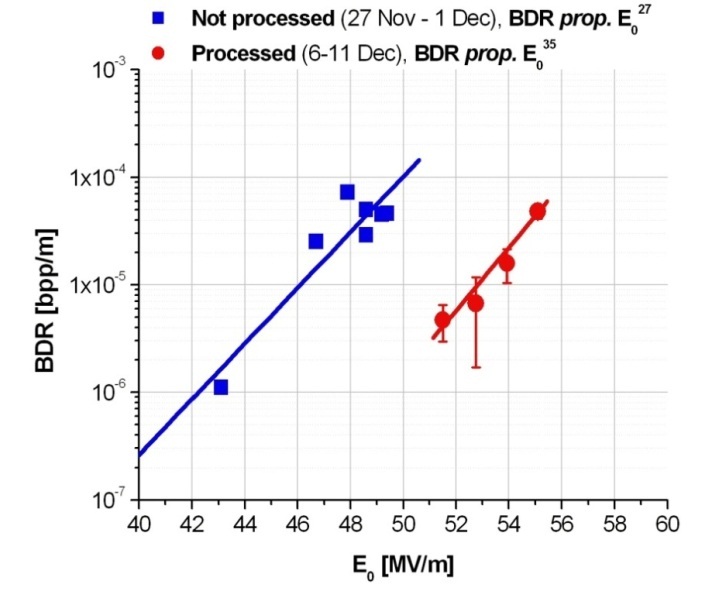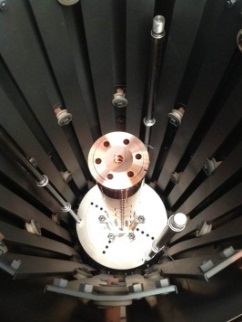

Fig1: Breakdown rates as measured at different field values before and after conditioning of the SPARC C-Band prototype. After processing, about 50 MV/m accelerating field has been reached, with a breakdown rate (BDR) per meter of the order of 10-6, which is a very good result in such structures. Image credits: INFN-LNF
Fig2: SPARC C-Band structure in the oven before brazing. Image credits: INFN-LNF
The use of Radio-Frequency C-Band accelerating structures for electron acceleration and production of high quality beams has been recently proposed and adopted in several linac projects all over the world.
Two important FEL projects have adopted such type of structures: the Japanese FEL project at SPring-8 and the Swiss-FEL project at the Paul Scherrer Institute (PSI). Even if this technology is less known with respect to the more consolidated S-Band one, beam dynamics calculations and experimental measurements demonstrated the possibility to reach high beam quality and higher gradients, making the C-Band technology very appealing from this point of view. Possibilities to use C-Band structures for hadron therapy are also under study from several years and seem to be very promising.
In the SPARC photo-injector facility at the INFN Frascati National Laboratories (LNF, Italy) an R&D programme on C-Band structures is being carried out in order to upgrade the beam energy from 150 to more than 250 MeV in the facility. Involving both LNF and PSI, this programme is performed within the High Gradient Acceleration (HGA) Work Package of the TIARA Preparatory Phase.
The choice of the C-Band for the energy upgrade was dictated by the opportunity to achieve a higher accelerating gradient, enabled by the higher frequency, and to explore C-Band acceleration combined with a S-Band injector that, from beam dynamics simulations, looks very promising. The energy upgrade of SPARC will be done by replacing one low gradient S-Band accelerating structure with two C-Band structures.
